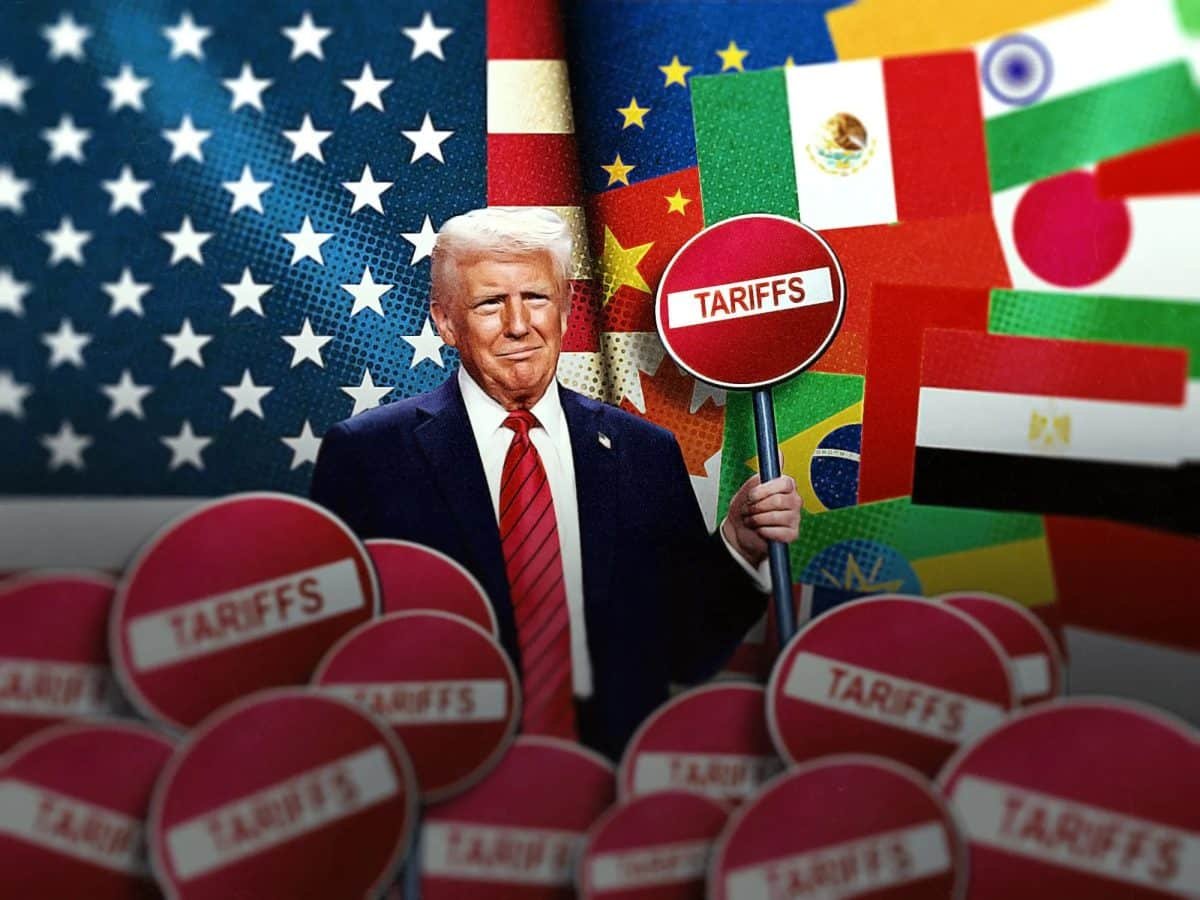In a significant policy shift that has sent shockwaves across global markets, President Donald Trump has announced plans to impose new tariffs on aluminum imports. The proposed measures, which include a 25% tariff on imports from Mexico and most Canadian goods, along with a 10% tariff on Chinese goods, are set to take effect on Tuesday. The lack of specific details surrounding the tariff implementation has added to market anxieties, leaving industry stakeholders uncertain about how to adjust supply chains and pricing strategies.
As the U.S. metal industry grapples with this unexpected policy change, analysts predict that American companies may increasingly turn to suppliers in the Middle East and India to mitigate the cost burden imposed by these tariffs. The shift could significantly alter global trade flows, particularly in the aluminum sector, where the U.S. has long relied on Canadian imports.
The Role of Aluminum in U.S. Industry and Economy
Aluminum is a crucial material used in multiple industries, including automotive manufacturing, construction, aerospace, electronics, and packaging. In 2023, the United States imported millions of metric tons of aluminum products, with Canada accounting for a significant portion of these shipments. The reliance on Canadian aluminum has been a longstanding trend, with companies like Alcoa and Rio Tinto playing a major role in supplying the U.S. market.
In addition to Canada, the United Arab Emirates, India, and China have been key suppliers of aluminum to the United States. However, with tariffs now being introduced on Mexican and Canadian imports, industry experts believe the U.S. will look toward alternative markets such as the Middle East and South Asia.
Why the U.S. May Turn to the Middle East and India
Several factors make Middle Eastern and Indian aluminum producers attractive alternatives for American buyers:
- Cost Competitiveness: Aluminum producers in the UAE and Bahrain, such as Emirates Global Aluminium and Aluminium Bahrain (Alba), operate with lower production costs due to favorable energy prices and advanced manufacturing facilities. This makes their products highly competitive in the international market.
- Production Capacity: India is home to major aluminum producers like Hindalco Industries and National Aluminium Company Limited (NALCO), which have been steadily increasing their production capacities. India has already been exporting aluminum to several global markets and could now see an opportunity to expand its presence in the U.S.
- Diversification of Supply Chains: With tariffs making Canadian and Mexican aluminum more expensive, U.S. companies may seek to diversify their supply sources to reduce dependency on a single region. The Middle East and India offer viable alternatives that can help mitigate risks associated with trade restrictions.
- Strategic Partnerships: Many Middle Eastern aluminum producers have strong trade relationships with the U.S. and have been supplying metals for various industries. These existing partnerships could pave the way for increased trade volumes.
Industry Reactions and Strategic Adjustments
The announcement of the tariffs has already begun to impact market behavior. William Oplinger, CEO of Alcoa, has suggested that the company could redirect its Canadian material to Europe if necessary. This move would allow Alcoa to avoid the U.S. tariffs while maintaining its international trade relationships.
Similarly, aluminum producers in the Middle East and India are closely monitoring the situation. Some industry sources have indicated that they are ready to ramp up exports to the U.S. if demand increases. However, others are taking a more cautious approach, waiting for further clarification on the tariff policies before making any major strategic adjustments.
Impact on Pricing and Supply Chains
One of the immediate consequences of the tariffs is the expected increase in aluminum prices within the U.S. market. Higher tariffs mean that American companies will have to pay more for imported aluminum, which could lead to higher production costs across multiple industries.
Market analysts predict that aluminum premiums will rise as a result of the tariffs. These premiums, which cover costs such as shipping and handling, are paid on top of the base metal prices to secure physical delivery. If the U.S. shifts its sourcing toward Middle Eastern and Indian suppliers, logistical costs may also increase due to longer shipping distances.
The price impact is already being felt in global aluminum markets. On Monday, London Metal Exchange (LME) aluminum prices showed an upward trend as investors assessed the potential impact of Trump’s tariffs. The three-month aluminum benchmark on the LME saw slight gains, reflecting growing concerns over supply disruptions.
Historical Context: A Pattern of Trade Barriers
This is not the first time that the U.S. has imposed tariffs on aluminum imports. In 2018, the Trump administration introduced a 10% tariff on aluminum imports under Section 232 of the Trade Expansion Act, citing national security concerns. That move led to significant trade tensions, with Canada and other countries retaliating with their own tariffs on American goods.
The effectiveness of these tariffs has been widely debated. While some industry leaders argue that they protect domestic manufacturers from foreign competition, others believe they ultimately increase costs for American businesses and consumers. The latest round of tariffs is expected to reignite this debate, with stakeholders on both sides weighing in on the potential economic implications.
Global Trade Implications and Market Realignments
Beyond the U.S., the new tariffs could trigger broader shifts in global aluminum trade patterns. If Canadian and Mexican aluminum producers lose access to the U.S. market, they may seek alternative buyers in Europe and Asia. This could lead to increased competition in those regions, affecting pricing and supply dynamics.
For India and the Middle East, the tariffs present both challenges and opportunities. While Indian aluminum exports to the U.S. may initially decline due to the tariffs, producers could find new opportunities to fill the supply gap left by restricted Canadian and Mexican imports. However, these adjustments will take time, and companies will need to navigate logistical and regulatory challenges to fully capitalize on the shifting market landscape.
Potential Legal and Political Ramifications
The introduction of tariffs could also lead to legal challenges from affected countries. Canada and Mexico, both major aluminum suppliers to the U.S., may consider filing complaints with the World Trade Organization (WTO) or seeking exemptions from the tariffs through diplomatic negotiations.
Additionally, U.S. domestic manufacturers that rely on imported aluminum may push back against the tariffs, arguing that they increase production costs and reduce competitiveness. Industry associations and business groups are expected to lobby for policy adjustments that minimize the negative impact on American companies.
Future Outlook: What Comes Next?
As the new tariffs take effect, industry observers will closely monitor how the market responds. Key questions remain:
- Will Canada and Mexico negotiate exemptions or retaliate with their own trade measures?
- How quickly will U.S. aluminum buyers shift their sourcing to alternative suppliers in the Middle East and India?
- Will domestic aluminum producers in the U.S. benefit from reduced foreign competition, or will higher prices hurt downstream industries?
- Could there be further policy changes depending on economic and political reactions?
The coming months will be critical in determining the long-term impact of these tariffs on the U.S. aluminum industry and the broader global market.
Conclusion: A Pivotal Moment for Global Aluminum Trade
President Trump’s new aluminum tariffs represent a significant shift in U.S. trade policy, with wide-ranging implications for industries and economies around the world. While the move is intended to protect American manufacturing, it also poses challenges for companies that rely on imported aluminum.
The likely shift in supply chains toward the Middle East and India underscores the interconnected nature of global trade and the adaptability of markets in response to policy changes. As businesses and policymakers navigate this evolving landscape, strategic decision-making will be crucial in mitigating risks and capitalizing on new opportunities.
The global aluminum trade is entering a period of transition, and how different players respond to these changes will shape the industry for years to come.
Ready to take your career to the next level? Join our dynamic courses: ACCA, HESI A2, ATI TEAS 7 , HESI EXIT , NCLEX – RN and NCLEX – PN, Financial Literacy!🌟 Dive into a world of opportunities and empower yourself for success. Explore more at Serrari Ed and start your exciting journey today! ✨
photo source: Google
By: Montel Kamau
Serrari Financial Analyst
10th January, 2025
Article, Financial and News Disclaimer
The Value of a Financial Advisor
While this article offers valuable insights, it is essential to recognize that personal finance can be highly complex and unique to each individual. A financial advisor provides professional expertise and personalized guidance to help you make well-informed decisions tailored to your specific circumstances and goals.
Beyond offering knowledge, a financial advisor serves as a trusted partner to help you stay disciplined, avoid common pitfalls, and remain focused on your long-term objectives. Their perspective and experience can complement your own efforts, enhancing your financial well-being and ensuring a more confident approach to managing your finances.
Disclaimer: This article is for informational purposes only and does not constitute financial advice. Readers are encouraged to consult a licensed financial advisor to obtain guidance specific to their financial situation.
Article and News Disclaimer
The information provided on www.serrarigroup.com is for general informational purposes only. While we strive to keep the information up to date and accurate, we make no representations or warranties of any kind, express or implied, about the completeness, accuracy, reliability, suitability, or availability with respect to the website or the information, products, services, or related graphics contained on the website for any purpose. Any reliance you place on such information is therefore strictly at your own risk.
www.serrarigroup.com is not responsible for any errors or omissions, or for the results obtained from the use of this information. All information on the website is provided on an as-is basis, with no guarantee of completeness, accuracy, timeliness, or of the results obtained from the use of this information, and without warranty of any kind, express or implied, including but not limited to warranties of performance, merchantability, and fitness for a particular purpose.
In no event will www.serrarigroup.com be liable to you or anyone else for any decision made or action taken in reliance on the information provided on the website or for any consequential, special, or similar damages, even if advised of the possibility of such damages.
The articles, news, and information presented on www.serrarigroup.com reflect the opinions of the respective authors and contributors and do not necessarily represent the views of the website or its management. Any views or opinions expressed are solely those of the individual authors and do not represent the website's views or opinions as a whole.
The content on www.serrarigroup.com may include links to external websites, which are provided for convenience and informational purposes only. We have no control over the nature, content, and availability of those sites. The inclusion of any links does not necessarily imply a recommendation or endorsement of the views expressed within them.
Every effort is made to keep the website up and running smoothly. However, www.serrarigroup.com takes no responsibility for, and will not be liable for, the website being temporarily unavailable due to technical issues beyond our control.
Please note that laws, regulations, and information can change rapidly, and we advise you to conduct further research and seek professional advice when necessary.
By using www.serrarigroup.com, you agree to this disclaimer and its terms. If you do not agree with this disclaimer, please do not use the website.
www.serrarigroup.com, reserves the right to update, modify, or remove any part of this disclaimer without prior notice. It is your responsibility to review this disclaimer periodically for changes.
Serrari Group 2025












